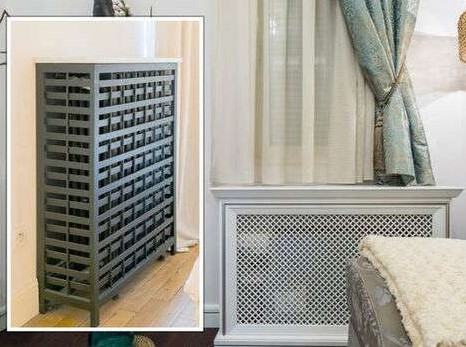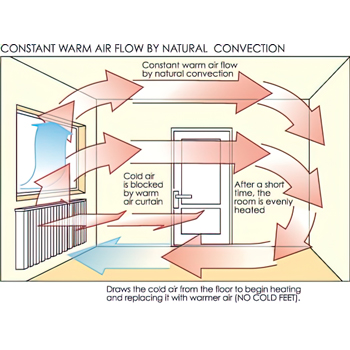While decorative radiator covers may add a stylish touch to your home, they can have unintended consequences on your heating efficiency and energy bills. In this post, we’ll explore why using decorative radiator covers might not be as harmless as it seems and how they can actually cost you more in the long run.
How Radiators Work: The Importance of Convection
Radiators heat your home by warming the air around them. This warm air then rises and circulates throughout the room, that falls as it cools, creating a convection current that helps distribute heat evenly. For this process to work effectively, the air needs to flow freely around the radiator. Anything that obstructs this flow, like a decorative cover, can interfere with the radiator’s ability to heat your space efficiently.
The Impact of Decorative Radiator Covers on Heating Efficiency
Reduced Heat Output
Decorative covers often block a significant portion of the radiator’s surface area, limiting the amount of heat that can be released into the room. This reduction in heat output means your heating system has to work harder and run longer to achieve the desired temperature, leading to increased energy consumption.
Impaired Convection
As mentioned earlier, radiators rely on convection to distribute heat. A cover that encloses the radiator can disrupt this natural airflow, trapping heat inside the cover and preventing it from circulating properly. This not only warms the radiator cover first, but also forces your heating system to use more energy to compensate.
Increased Energy Bills
Because your heating system is working harder and longer to heat your home, the use of decorative radiator covers can directly contribute to higher energy bills. The longer your heating system runs, the more fuel or electricity it consumes, ultimately leading to increased costs over time.
Potential Damage to Your Heating System
Over time, uneven heating can lead to damage in the radiator or even affect the performance of your entire heating system. Additionally, the constant strain on your boiler to maintain the desired temperature through 'muffled' radiators can shorten its lifespan and increase the likelihood of breakdowns.
Alternatives to Decorative Radiator Covers
If you’re concerned about the appearance of your radiators but don’t want to compromise on efficiency, there are other options to consider:
- Paint Your Radiator: Use radiator-specific paint to give your radiator a fresh, stylish look that complements your decor without affecting its performance.
- Choose a Designer Radiator: There are many modern radiator designs that are both functional and visually appealing. Upgrading to a designer radiator can enhance the look of your room while maintaining optimal heating efficiency.
- Radiator Shelves: Installing a radiator shelf above your radiator can provide a decorative element without obstructing airflow. These shelves can also help direct warm air into the room more effectively.
Maximizing Heating Efficiency in Your Home
To ensure your heating system is operating at its best, consider the following tips:
- Keep Radiators Unobstructed: Avoid placing furniture, curtains, or other objects in front of radiators, as this can block the flow of warm air.
- Use Reflective Panels: Install reflective panels behind your radiators to reflect heat back into the room rather than letting it escape through the walls.
- Regular Maintenance: Schedule regular maintenance for your heating system to keep it running efficiently and prevent costly breakdowns.
Conclusion
While decorative radiator covers may seem like a simple way to enhance your home’s décor, they can have significant drawbacks when it comes to heating efficiency and energy costs.
By understanding the impact these covers can have, you can make informed decisions about how to best manage your home’s heating system. For more advice on optimizing your heating efficiency or to explore alternative radiator options, contact us today. Advice is always free!





